Are you looking for a stand-up paddleboard that can suit your style and needs? Well, you probably don’t want to lose your cash on a SUP you don’t need. So, we’re here to help you select your first SUP in today’s stand-up paddle board buying guide.
You need to consider many things before selecting it, like consider your purpose of buying, how you are going to use it, will it fits your size, is it affordable enough, and more. This is how you can find the right stand-up paddle board for you!
Now, let’s dive into crucial factors you need to look at before purchasing. Additionally, we will answer some of the most common questions that might come to your mind too. So, let’s begin!
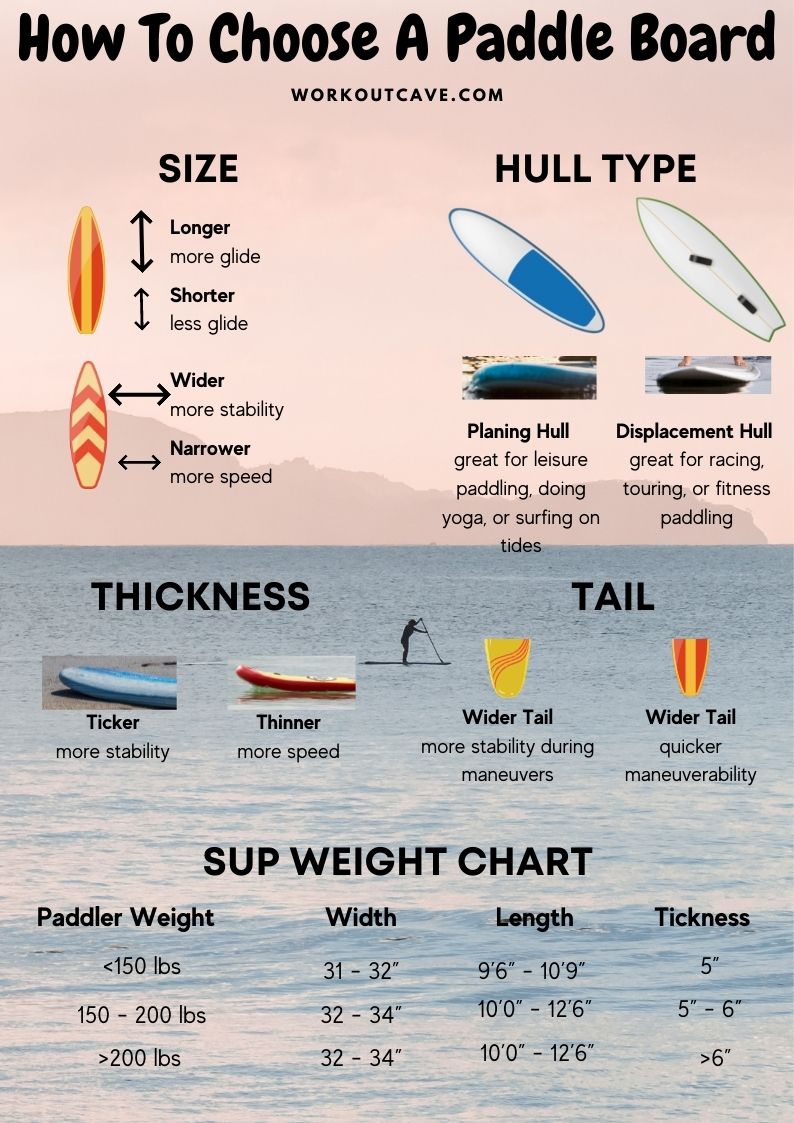
Crucial Factors to Consider
People look at various things while getting a stand-up paddle board. They inspect the design, look, colors, style, material, and many more things. Some of these are unimportant. However, we are going to show you the 5 main crucial ones.
Your Requirement
First, decide why you need a paddleboard. They come in different styles for various actions. Your paddling water-body will determine the board you need, whether you need it for surfing or racing. Even if you want to learn paddle boarding, there are boards with recommended specs, especially for beginners.
Then you need to consider the medium where you use it. Are you going into the sea or river? Is the sea a calm one or rushing with tides? Different water bodies demand a different design.
Check the Design
Width
Then comes what your board’s dimensions will be. You need to check its length as well as width—the size affects your performance. In general terms broader and longer boards are easy to start with as they offer stability. Reduce the length a bit, and you will be able to control the turnings and their maneuvers. While longer and narrower boards are optimum for racing.
- Wider boards – offer more stability
- Longer boards – offer more glide
- Narrower boards – offer more speed
- Boards with wider tail – offer more stability during maneuvers
- Boards with narrower tail – offer quicker maneuverability
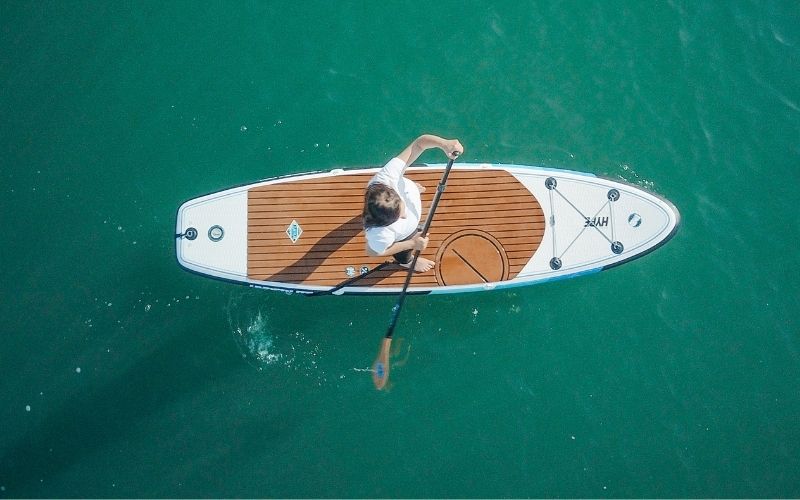
Thickness
Then also, check the thickness of your paddling plank. Thicker pieces have more volume capacity, which means they can support more weight. But the thinner ones move faster. You need to figure out your required dimensions according to your activity and body.
- Ticker Boards – offer more capacity which gives you more stability
- Thinner boards – offer more speed
Hull Type
After that, you need to keep the hull type in mind. The planing hull is flat from the bottom and gives more stability. They are great if you want to enjoy leisure paddling, do yoga, or surf on tides. On the other hand, the displacement hull has a pointed nose in the bottom, cutting through the water. It is appropriate for racing, touring, or fitness paddling.
- Planing Hull – great for leisure paddling, doing yoga, or surfing on tides
- Displacement Hull – great for racing, touring, or fitness paddling
Inflatable vs. Solid
Now, you have to check the key features of both: Solid SUPs and Inflatable SUPs. The solid ones are better in performance and offer more stability, while the inflatable ones give portability.
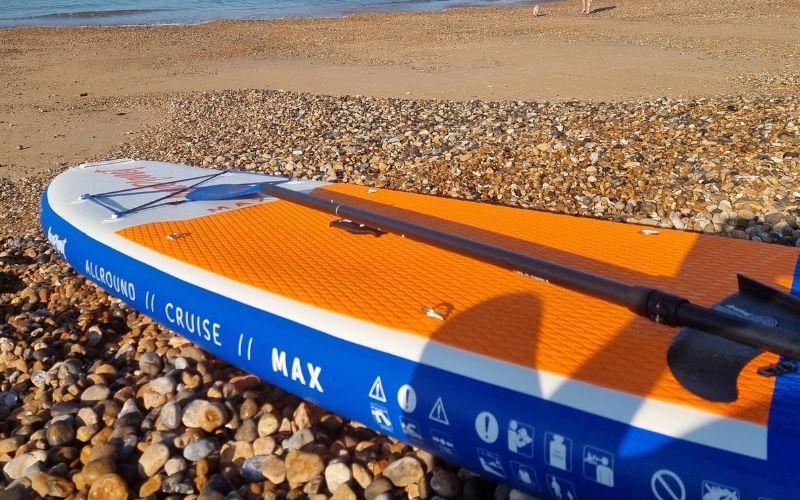
Weighty Capacity
Check the table below to find the appropriate width, length, and thickness in relation to paddler weight.
| Paddler Weight | Width | Length | Thickness |
| Under 150 lbs. | 31 – 32” | 9’6” – 10’9” | 5” |
| 150-200 lbs. | 32 – 34” | 10’0” – 12’6” | 5” |
| Above 200 lbs. | 32 – 34” | 10’0” – 12’6” | 6” |
Solid Paddle Boards
Solid Paddle Boards are reliable. They have greater speed, and you can easily use them for longer touring. The only problem is their portability. As they are hard, you need some extra space to store them. Besides, they can also cause a headache when transporting to the beach or lake due to heavy size.
Inflatable Paddle Boards
Inflatable Paddle Boards shine where solids lack. You can carry them anywhere anytime and offer easy storage. As they roll up, just put them in the back seat and set them on your way. But they are not ready to go. You need to pump them when you reach your destination.
Price According to Your Skill
This factor is important; consider whether you can afford that SUP paddleboard or not? However, SUPs are pricey, and it doesn’t mean an expensive paddle board will make you an instant expert. If you’re a beginner, buy one that comes at a reasonable price with all the specs you need. As soon as you get it, start learning and practicing. When you get better at it, consider moving to an upgrade option, depending on your need.
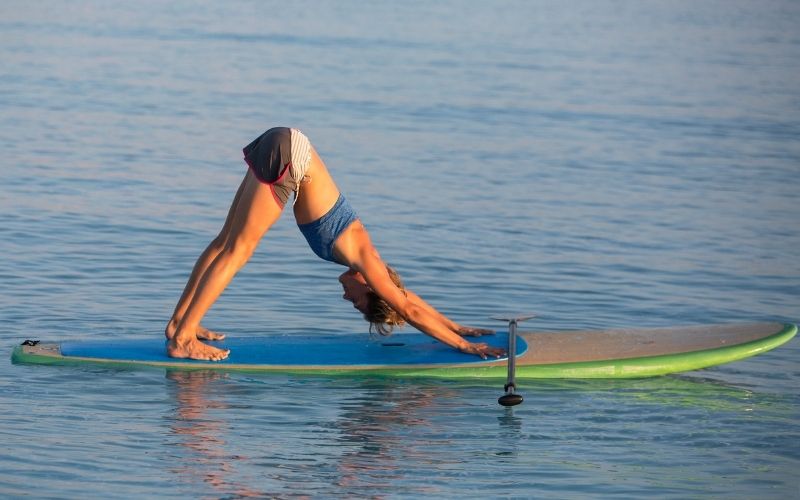
Portability
Last but not least, this factor is connected with the third one, so you have to consider that first. If you want portability, you are good to go with an inflatable one. But if you want performance, select a solid board.
Conclusion
Buying a paddleboard is not like finding the correct dress color for your wife (the latter is harder). You just need to follow your instincts. But if you are a beginner, then there are some areas which you should care for. We’ve given you a detailed stand up paddle board buying guide with some most important factors. So, keep them in mind while purchasing.
My Personal Expirence
I have now been paddle boarding for over a year and I love it. Regularly doing strength training and bodyweight training, I find SUP is a great activity during recovery or gym exhaustion. For my needs, I won a all-rounder Aquaplanet MAX SUP 10’6″ Long, Thickness: 6″, Planning Hull.
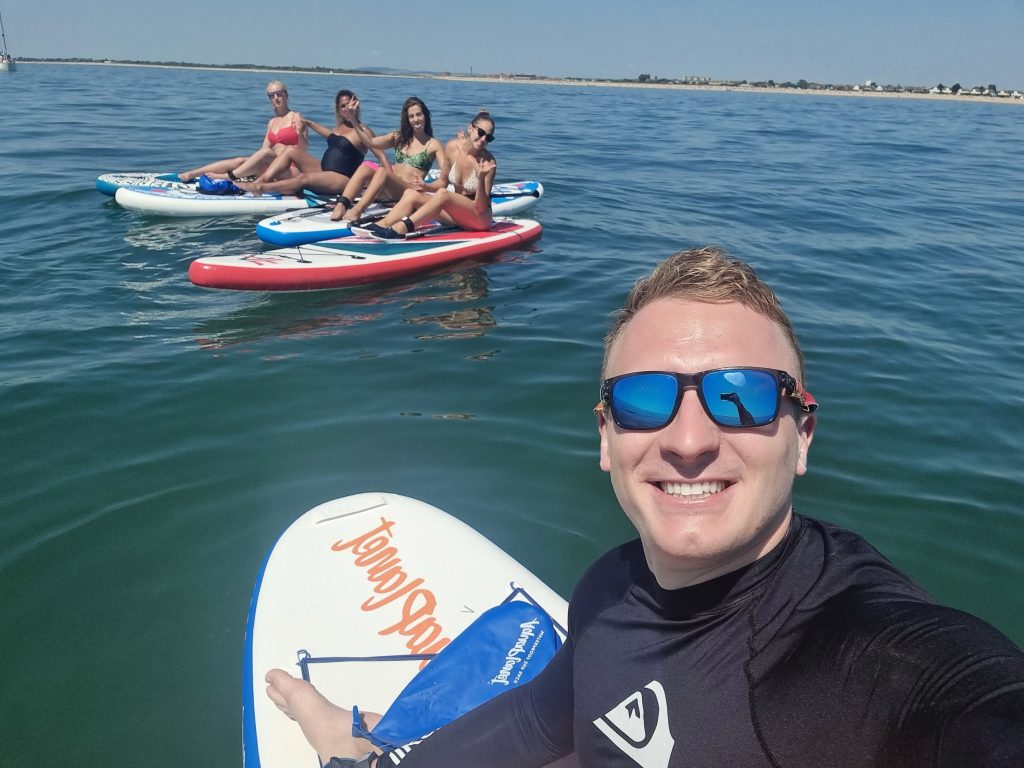
Size Guide
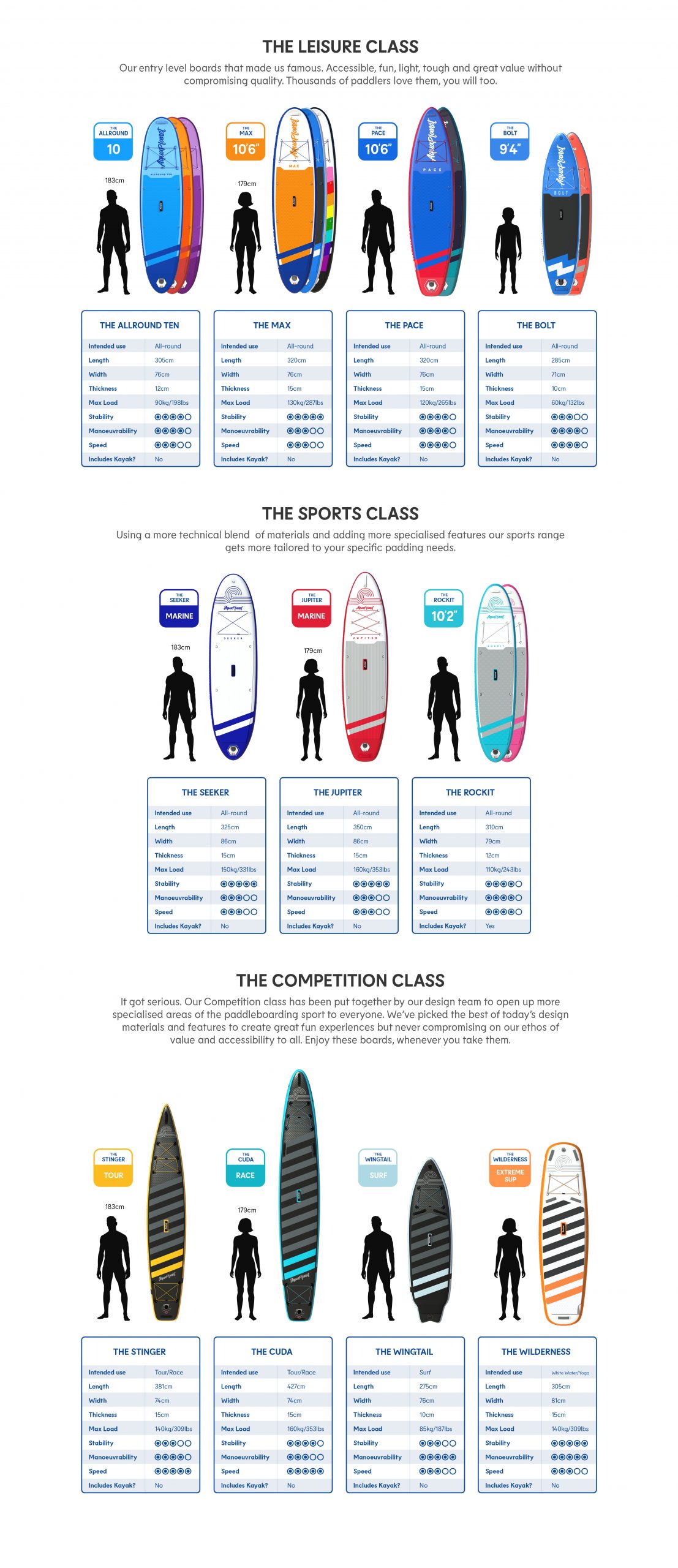
Frequently Asked Questions
What size paddle board should I get?
If you’re a beginner, then better get a broader paddle board: the bigger, the stable, simple mantra. Moreover, you need something with enough width as per your weight to give you proper stability. Check the table below to find the best width according to your weight.
How much is a paddle board?
The inflatable paddle boards can cost as low as $300. Nevertheless, if you want something with the best quality, you may need up to $1,700. For instance, the average cost of these SUPs is $500, and you can get a decent piece in this price range.
The solid epoxy paddle boards are pretty expensive. They start from $700 and can go up to $3,000. The price is for the performance they offer. Still, you can find a decent one at $1,000.
Is There A Weight Limit For Paddle Boarding?
Generally, paddle boards can hold up to 200 lbs. But if you are talking about the maximum capacity limit, they can hold even 500 lbs.
How Long a Paddle Board Lasts?
Typically, a paddle board’s lifetime depends on the usage and material. If you have a low-quality board, it may last hardly three years. While if you get a fine piece, it can last more than five years. However, the age is not specific; you can use it even more with proper care.
How to hold paddle board paddle?
The correct way to hold a paddle board paddle with the blade angled forward away from you. That way when stroking the water is pushed straight back. Your bottom hand should be placed about halfway down the paddle, with a top hand at the handle. This will maximise leverage and provide more power.
Our Guides
We have reviewed a lot of paddle boards and came up with rankings for individuals’ needs:
